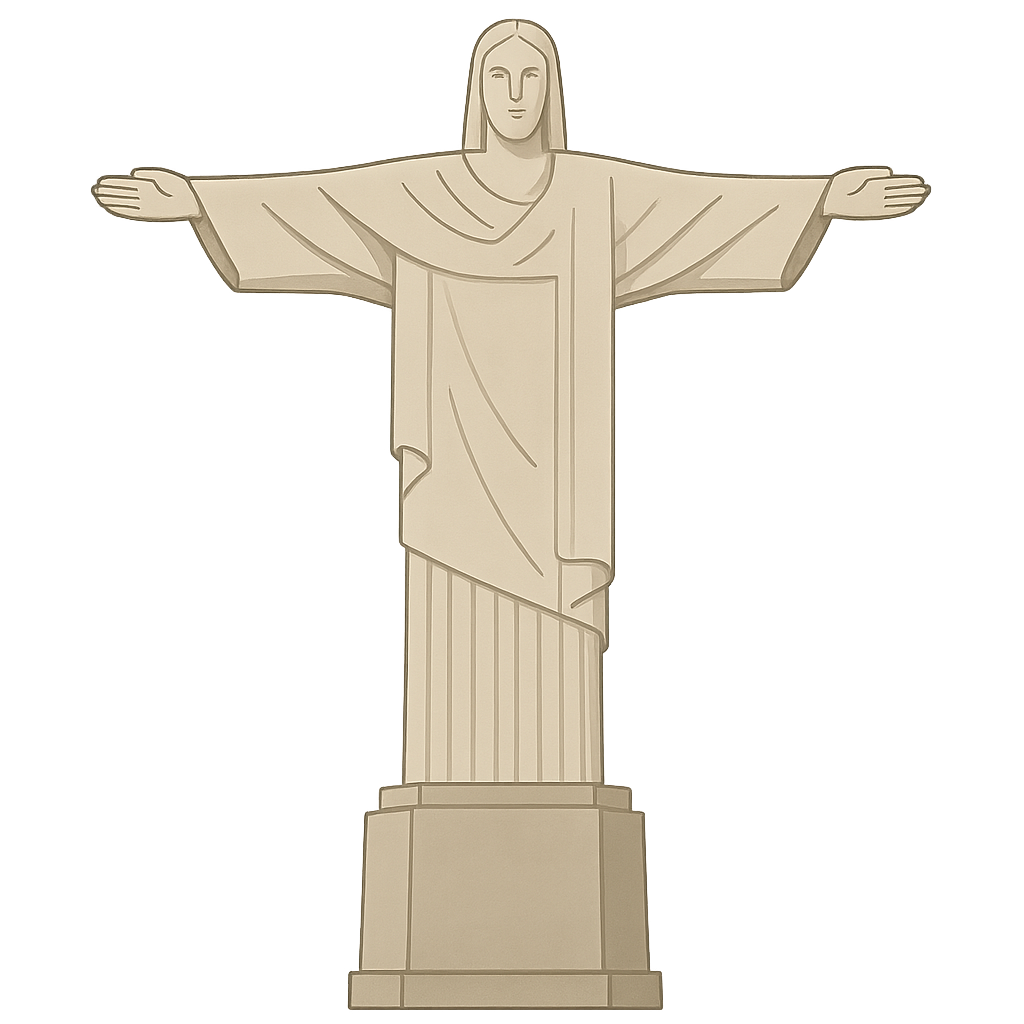The Guardian on the Mountain
From my perch high above a sleeping city, I watch the world awaken. I stand on the very peak of a steep, granite mountain, with clouds drifting past my face like soft whispers. Below me, a magnificent city unfurls. I see the graceful curve of sandy beaches kissed by the deep blue Atlantic Ocean and another famous peak, shaped like a loaf of sugar, standing guard at the entrance to a glittering bay. The sun warms my stone skin, and the wind sings a timeless song around my outstretched arms. For nearly a century, I have kept this silent watch, a constant presence in the sky. Millions look up to see me, a figure of peace against the horizon. I am a guardian, a symbol, and a friend to the vibrant city of Rio de Janeiro. I am Christ the Redeemer.
My story begins not with stone and steel, but with an idea born from hope. In the years after the First World War ended in 1918, the people of Brazil longed for a powerful symbol of peace and faith to unite their nation. A group called the Catholic Circle of Rio proposed building a monumental statue of Jesus Christ on the summit of Corcovado Mountain, where it could be seen from all over the city. A competition was held, and a brilliant Brazilian engineer named Heitor da Silva Costa was chosen to bring this dream to life. His initial design was different, showing me holding a cross and a globe. But working with the talented artist Carlos Oswald, the vision evolved into something simpler and more profound: me, with my arms wide open, embracing the city and the world. The design was a masterpiece of Art Deco style, strong and elegant.
Building me was an extraordinary challenge. The peak of Corcovado is over 700 meters high, with sheer cliffs and dense forest. How could anyone transport tons of material to such a remote spot? The answer already existed: a small railway, the Corcovado Rack Railway, which had been climbing the mountain since 1884. It became my lifeline, carrying cement, steel, and workers up the steep slopes. My construction finally began in 1926. My skeleton is made of reinforced concrete, a modern marvel for its time. To create my head and hands with gentle, human detail, Heitor da Silva Costa collaborated with a famous French sculptor, Paul Landowski, who sculpted them in his studio in Paris. They were shipped to Brazil in pieces and carefully assembled here. My skin, however, is my most special feature. It is a mosaic of thousands of small, triangular soapstone tiles. This stone is soft enough to carve but strong enough to resist the weather, and it gives me a beautiful, shimmering glow. In a wonderful act of community, women from all over Rio volunteered to glue these tiles onto squares of cloth, which were then applied to my concrete body like a beautiful quilt. After five years of hard work, my inauguration on October 12, 1931, was a moment of national pride, a testament to faith, art, and engineering.
For decades, I have watched over Rio de Janeiro, a silent witness to its history. I have seen generations of families grow, I have watched the joy of Carnival parades filling the streets with music and color, and I have felt the energy of the city during the 2016 Olympic Games. My purpose has grown beyond being a religious icon. I have become a destination for people from every country and every belief. They make the journey up my mountain not just for the breathtaking view, but for a feeling of peace that settles over them as they stand beneath my open arms. In 2007, a great honor was given to me when people from all over the world voted to name me one of the New Seven Wonders of the World. This title is a reminder that my message is universal. My open arms do not judge or exclude. They are a symbol of welcome, a gesture of hope, and a promise of connection for all of humanity, forever reaching out to embrace the world.
Reading Comprehension Questions
Click to see answer
